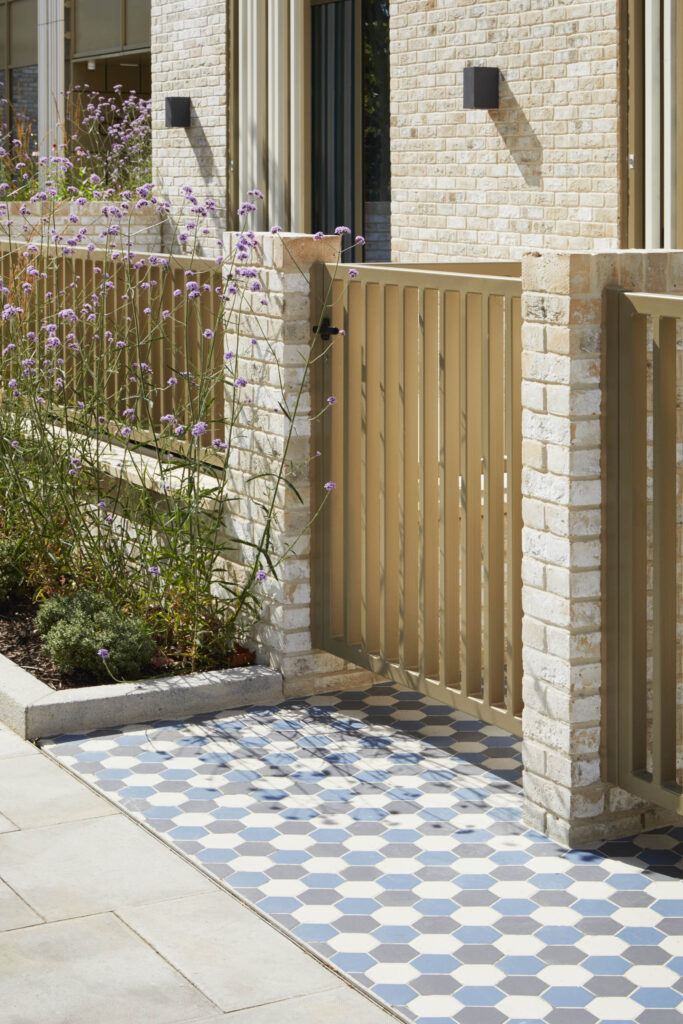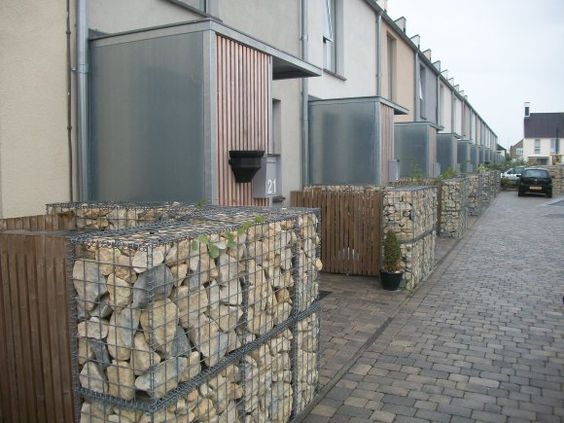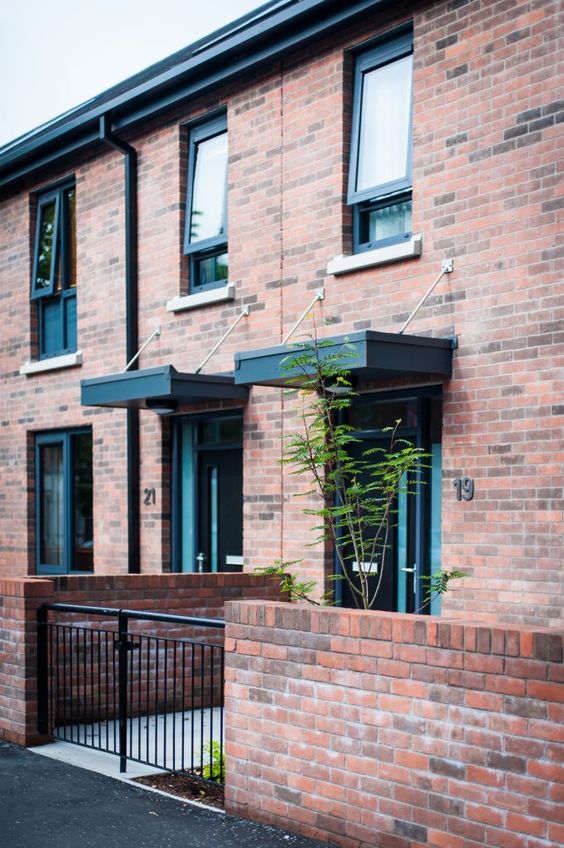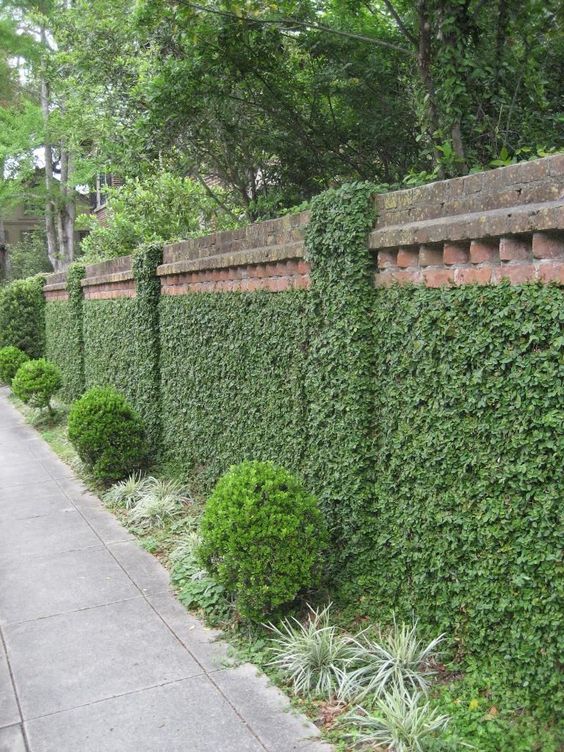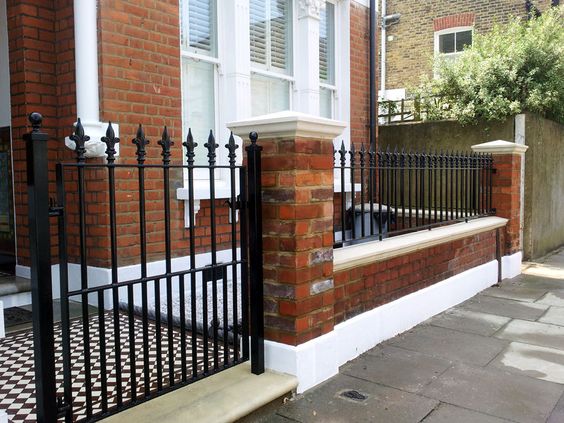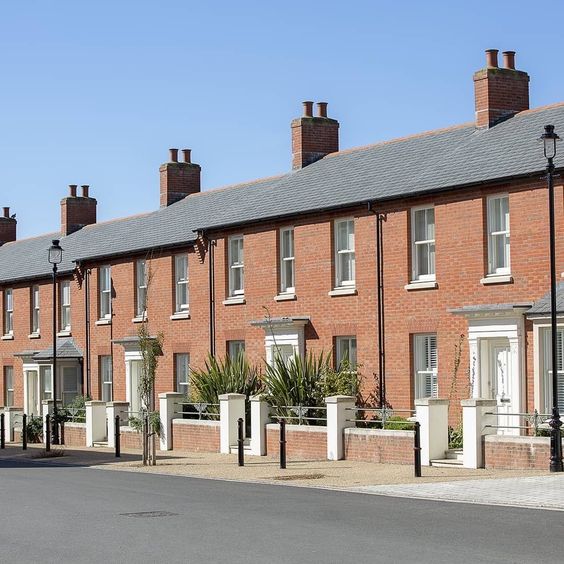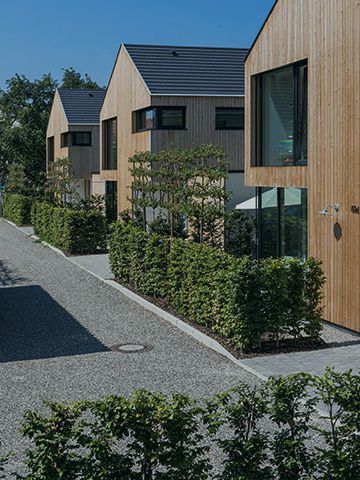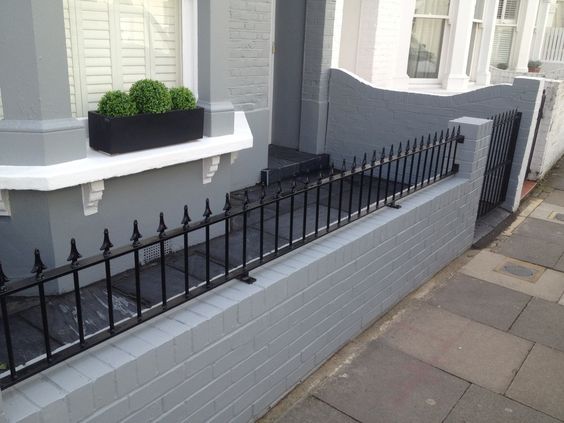Apartments
Boundary Treatments
Introduction
Well-designed places clearly define the boundaries between private, shared and public spaces, making it more likely that occupants will use, value and take ownership of them.
Existing traditional boundary treatments must always be retained. All new development should incorporate boundary treatment appropriate to its context. In most cases this will be brick or stone walls with hedge and tree planting behind, the aim being to create beautiful streets, improve security, distinguish between the public and private realm and increase biodiversity. Boundary treatments should be used to screen the view of cars from the street sceneAll spaces and features which form the street environment, including buildings, street furniture, fittings and finishes and green infrastructure and open spaces. More.
Features of apartment boundaries
- In keeping with context
- Either brick or stone construction with soft landscaping
- Rear landscape boundaries such as hedgerow
ABSP 1
Boundary treatments
Public facing boundaries must be constructed from either brick or stone walls and must incorporate soft landscaping.
Consistent and attractive boundary treatments help to tie an area together and help to clearly define the public and private realm. The inclusion of soft landscaping increases biodiversity and adds to the beauty of the street and garden scene, often screening vehicle parking and adding value and a sense of stewardship to a development.
Boundary treatments should be informed by high quality traditional examples in the surrounding area. In Trafford this will typically be low brick or stone walls with a hedge behind. In rural areas boundary treatments may vary, and should be influenced by historic context, which may include the use of Cheshire railings.
Applicants should demonstrate in their submission how this element of the Code has been complied with.
Development types:
- Where traditional boundary treatments remain on an infill development site,applicants should demonstrate how these will be retained and repaired, withany mature landscaping, including hedges, behind them.
Area Types:
- Rural and Villages – upright flags and Cheshire railings
- Suburbs – sandstone (south) and brick (north)
Documents required:
- Site plan
- Site Wide Landscape Strategy
- Elevation drawings
Examples
ABSP 2
Gates
Gate piers and gates must complement the boundary treatment and reflect the surrounding context in both design and height.
Gates should be side hung with apertures in the top half to allow visibility to enhance natural surveillance. Sliding gates should be avoided as they reduce the ability to adequately landscape a site.
Applicants should demonstrate in their submission how this element of the Code has been complied with.
Documents required:
- Site plan
- Site Wide Landscape Strategy
- Elevation drawings
ABSP 3
Historic boundary treatments
Historic boundary treatments must be retained and new openings kept to a minimum.
The retention of historic boundary treatments, including walls, railings and soft landscaping is important to ensure local distinctivenessThe positive features of a place and its communities which contribute to its special character and sense of place. More and to protect the characterCharacter includes all of the elements that go to make a place, how it looks and feels, its geography and landscape, its noises and smells, activity, people and businesses. This character should be understood as a starting point for all development. Character can be understood at three levels; the area type in which the site sits, its surroundings and the features of the site. More of the streetsceneAll spaces and features which form the street environment, including buildings, street furniture, fittings and finishes and green infrastructure and open spaces. More. Walls and associated planting should be repaired and enhanced where required.
Applicants should demonstrate how existing boundary treatments, including soft landscaping will be retained and repaired.
Applicants should demonstrate in their submission how this element of the Code has been complied with.
Documents required:
- Site plan
- Site Wide Landscape Strategy
- Elevation drawings
- Heritage Statement if required by the Council’s adopted Validation Checklist
- Materials schedule


